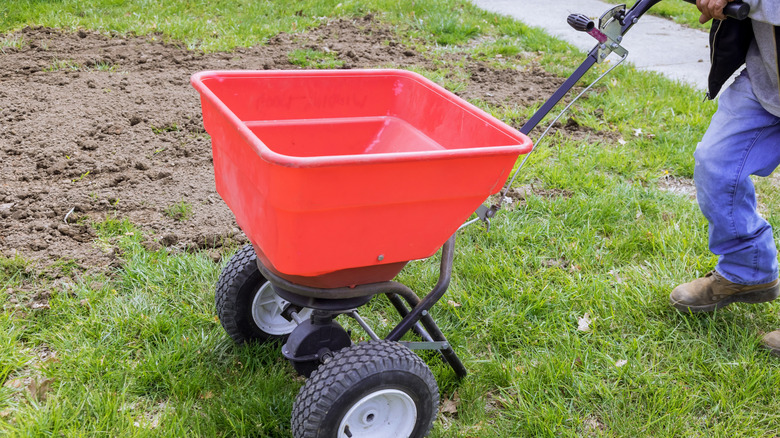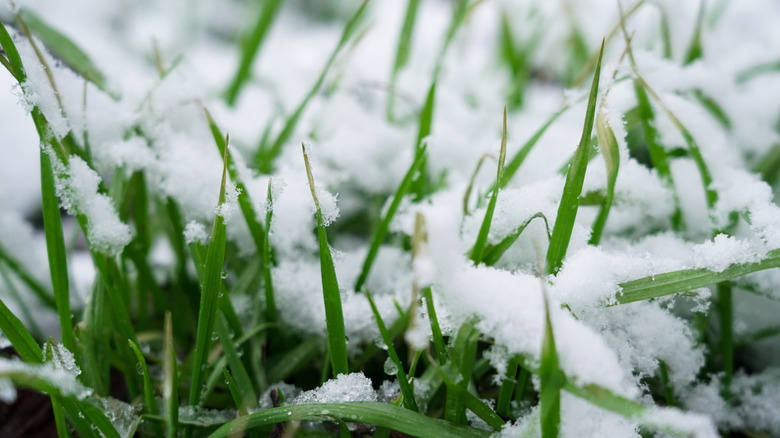Dormant Lawn Seeding Mistakes To Avoid In The Winter
There are many lawn seeding techniques out there. But did you know winter can be a great time to set the stage for a lush, healthy lawn in the spring? Seeding cool-season grasses during this dormant period can give your turf a head start on weeds when temperatures start to warm, but there are some common mistakes people make when dormant seeding. First, if you already have a thick, healthy lawn, this method probably isn't for you. Good seed-to-soil contact is essential, so dormant seeding is better for bare and thin spots in your grass. However, if you want to replace old, dead grass with a new lawn, this method may be helpful.
Second, don't expect immediate results. Sowing seeds in winter does not mean the seeds will start to germinate right away. Between freezing temperatures and the lack of sunlight, your seed should stay dormant until spring temperatures wake it up. Of course, leaving seed to fend for itself over the winter comes with perils. From foraging birds to simply getting washed away, you should expect a lower germination rate. Areas with a consistent layer of snow may actually fare better.
Third, timing mistakes can keep the seeds from germinating successfully. You have to ensure the soil is cold enough that your seed will not germinate before spring, but you shouldn't wait until the soil is completely frozen. For many, November through mid-December is the ideal time to seed, though it depends entirely on your local climate and weather conditions.
Tips for dormant seeding success
While there are many potential problems with dormant seeding, there are things you can do to enhance your chances of success. For instance, preparing the ground will give your seeds a better opportunity to stick around long enough to germinate. Rake the soil to loosen it and remove any rocks, stick, or other debris. You'll want the substrate firm but not compacted to ensure good soil contact.
Likewise, you have to choose the right seeds for this method. This is true no matter what seeding technique you use, but you will want to find a grass seed mix that will thrive in your local conditions and align with your maintenance expectations. Not a fan of watering? Choose something with lower moisture needs. Love to mow? Then a fast-growing mix may be just right for you. For most cool-season lawns, a mix of Kentucky bluegrass, fescue, and rye grasses will work.
Adding some compost or other organic matter to the soil will give your grass seed a better chance at success, as will watering the areas you've just seeded. After that, though, unless you get an unexpected warm spell, the cooler temperatures and wetter weather should be enough to keep your seed sufficiently moist. Check out these tips for caring for a healthy lawn to keep your new grass growing strong year round.

